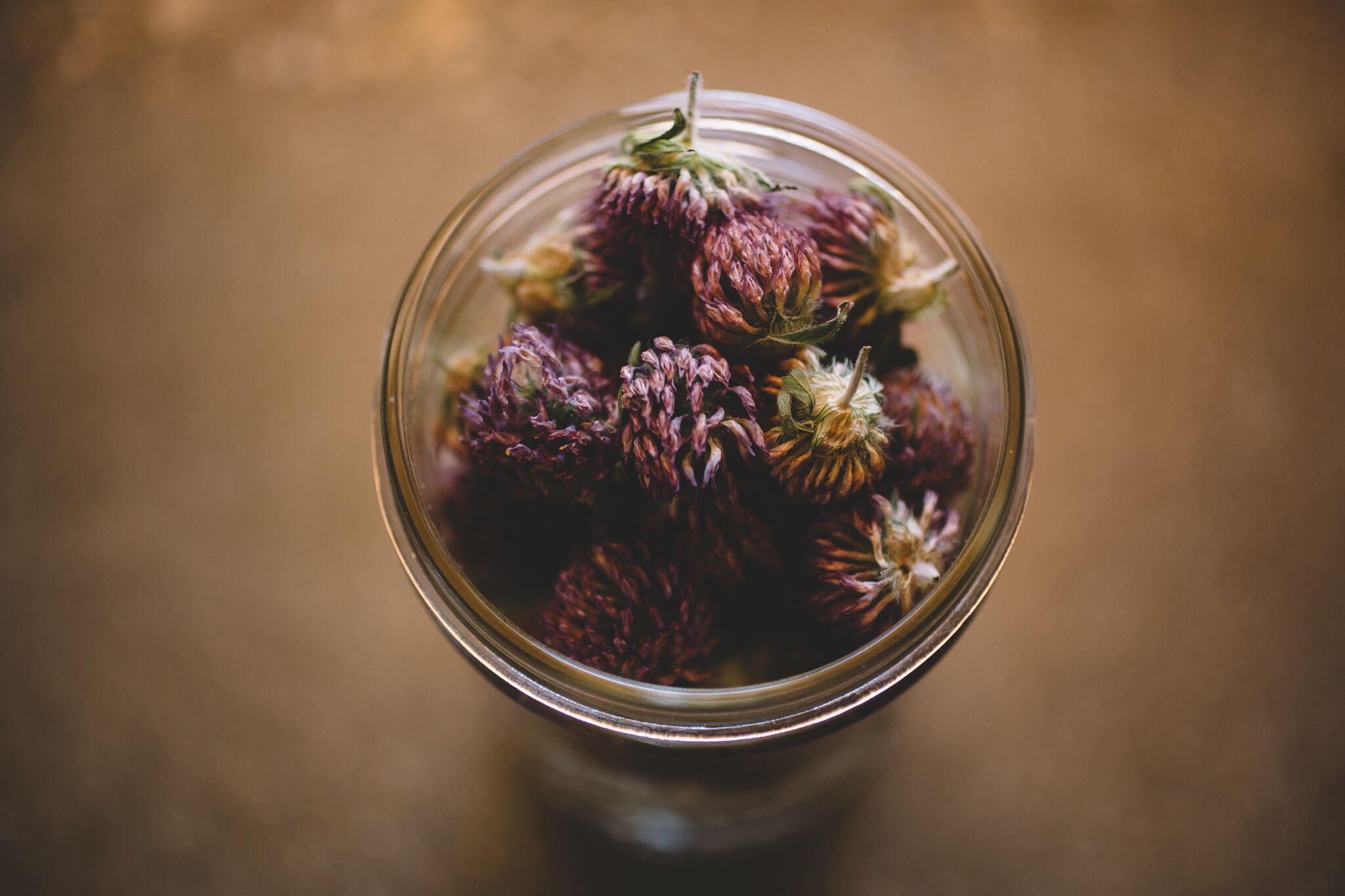Drying Flowers and Herbs
As the last days of summer wind to an end, our home is busy with the buzz of preserving the harvest. Our carrots have been pickled, our grapes have been made into syrup and jelly, and our tomatoes have been canned as ketchup and sauce. It's so wonderful to open a jar of grape jelly in the middle of winter and remember the summer harvest. Fruits and veggies aren't the only thing we like to preserve for the fall and winter months, though. The flowers and herbs we've grown or wildcrafted over the spring and summer last us well into the winter and beyond! Just thinking about cozying up to the fire with a hot mug of chamomile tea makes me feel excited for the colder months.
In order for the plants to retain the flavor, color, nutrients and medicinal qualities they have to be properly dried and stored. If there is even the smallest amount of moisture they will spoil, and you'll be opening up a moldy jar of mush. So, first you need to harvest your flowers and herbs. First, think about the parts of the plant you will be using. For flowers like calendula, chamomile, red clover, and viola, you might only use the flower heads. When you harvest, pop the flowers off of the stems and put them into a wide basket. You can dry them right there in the basket if you have a nice, dry room, with plenty of airflow, and if you spread the flowers around so that each one has room to dry. Every few days you may want to shift them around in the basket to make sure they are drying evenly.
Different flowers dry at different rates, so the way to tell when they are done is to take a few and see if they easily crumble in your fingers. If they do, they are ready to store; if not, you'll need to give them a few more days. The heat, airflow, moisture in the air, and moisture in the plant all play a role in how fast the flowers will dry. If you live in an area with higher humidity, you will most likely have better luck using a dehydrator. Use no higher than 110* Fahrenheit, and check the flowers every day. I'd caution against using a higher heat, as this will destroy much of the medicinal qualities and taste. At 110 degrees, they should only need 1-3 days of drying time in the dehydrator. Once they are completely dry, store them in glass jars with tight-fitting lids, away from direct light and heat. A dark closet or drawer both work well.
If you are drying stalks of plants, such as lavender, lemon balm, yarrow or peppermint, you can arrange a small handful of stalks and secure them with a rubber band. Then tie this small bouquet and hang it upside down in a warm, dry room with plenty of airflow and check daily for mold. Alternatively, you can secure a brown paper sack around the base of the bouquet before tying it upside down. Poking a few holes in the bag often yields better results. With lots of plants, such as catnip, apple mint, lemon balm, and peppermint, once they are completely dry, I like to strip the leaves off of the stems, adding the stems to my compost heap. Sometimes I use the dried bouquets as decoration or for gifts. Yarrow, lavender and helichrysum make especially lovely dried bouquets.
Note: Just as we eat plenty of our carrots and tomatoes fresh before canning the rest, fresh rather than dried teas are almost always preferable. When your flowers are in bloom, don't forget to make yourself that delicious mug of tea, right on the spot! Just put a handful of peppermint leaves or chamomile blossoms into a jar, pour boiling water over them, steep for a few minutes, then strain and drink up! The surplus you can dry and save to enjoy the rest of the year.
Happy Harvesting!
Love, Ashley



